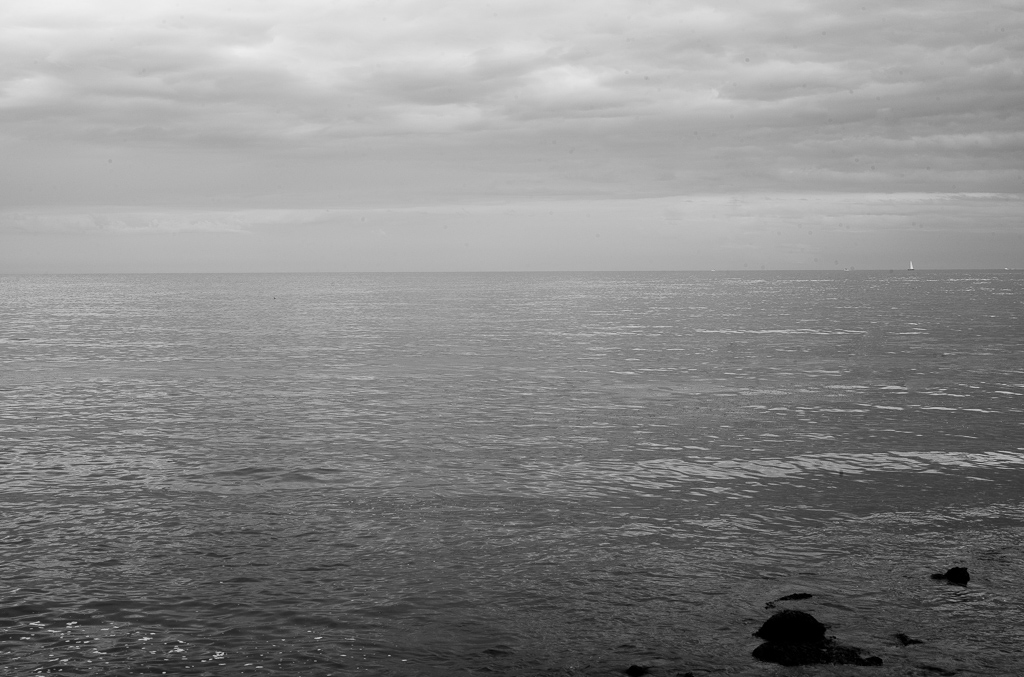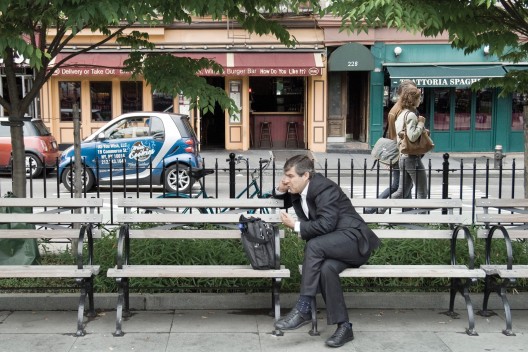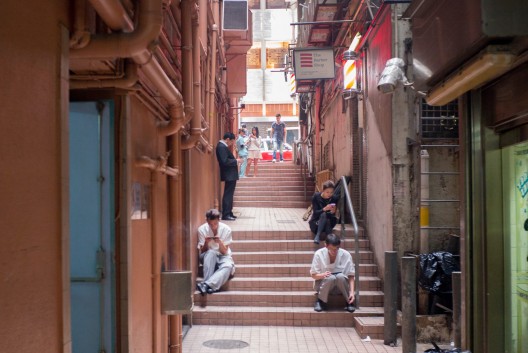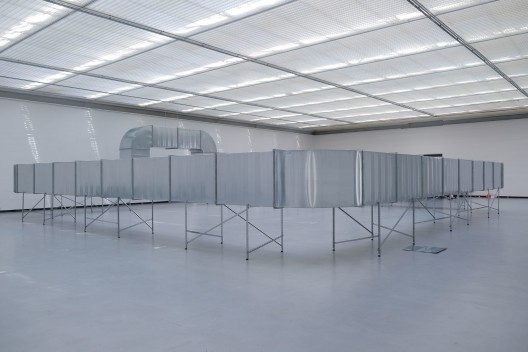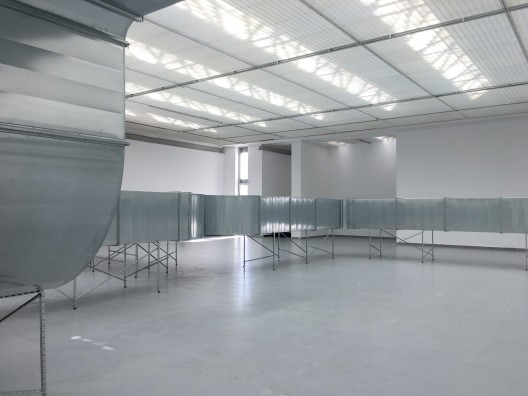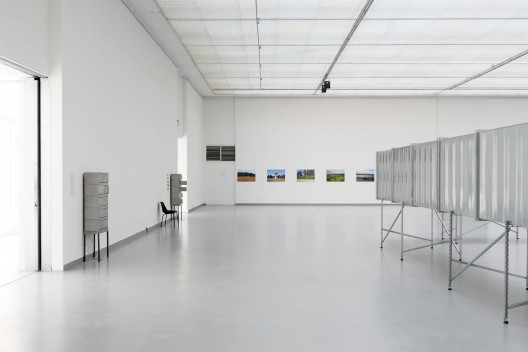I missed the year in review for 2021 entirely. The end of 2021 was stressful: it wasn’t a terrible year, the way the Trumpenjahren were, but it was bad. I ran out of steam and never pulled the post together. Not so this year. I’ve posted once a month on average, which is the most posts since 2016. Most of these were quite long opinion pieces and some, like the Critical AI Art projects took weeks of work to produce. Moreover, posting really began in earnest later in the year after I switched to my new server at Kinsta and my new theme powered by GeneratePress (see here). Not only is the site faster for you, dear reader, but it is also much faster for me to work on. For the first time in years, the future of this blog looks bright.
This post is comprised of four parts: The End of the Covidian, Geopolitical Transitions, Network Culture RIP, the Age of Desiring Machines
I. The End of the Covidian
2022 has been a good year and, although I know some of my readers will disagree, at least half of it felt like we left the pandemic behind. Goodbye to the Covidian era. As I write this, we are off skiing in northern Vermont and while some things still aren’t open and there are longer lines due to staffing shortages, it feels like COVID is over. Everyone in the family except me has had COVID during the last year and nobody got as seriously ill as our youngest did from the flu last month. Now, I’m far from an extremist on this: I have all my vaccines, all the boosters, and have taken reasonable precautions throughout the pandemic. But looking at the statistics, it’s clear that vaccines and herd immunity are here. Pretty much every article I see reposted to raise alarm about the new wave of COVID coming “any day now” declares that we need to watch out for a “troubling new variant,” but there is no troubling new variant, it’s just clickbait. Once there is a troubling new variant, then I’ll worry. In the meantime, this is the new normal. You’ll either be wearing a mask forever—which may be good if you are seriously immunocompromised—or not. Epidemiologists are pretty much always in a constant state of panic about diseases, it’s their training to do so; I’d probably be in a constant state of panic if I knew what they know. Instead, I’ll choose to live my life, which is what most people have done now.
It was always naïve or disingenuous of Dr. Fauci and others to claim that vaccines would utterly eliminate COVID the way Ebola was eliminated, COVID was already too widespread and contagious. But if COVID is, as claimed, a novel coronavirus, the odds are that once the massive and tragic initial impact is over, while it would never disappear, once we achieved a degree of immunity to it, it would be something we could live with in an endemic state, like existing coronaviruses, the new COVID normality. What about long COVID? Sure, it’s real, although many of the studies on long COVID seem quite poor, and instead of fretting about it, maybe we should pay attention to the long-term consequences of all viral infections? I have been struggling with IBS which began after a bad cold forty years ago, and Epstein-Barr, which causes mononucleosis, appears to cause multiple sclerosis. That’s pretty bad right there and while I have immense sympathy for anyone affected by any long viral disease, isolation, and constant masking have very real consequences on human life, particularly on child and adolescent development. We’re done with it and, unless and until something horrible appears, we’ll be living life in most ways as we did before March 2020. The COVID-induced supply chain crisis is largely over. New challenges are emerging, but the Covidian era is (likely) history.
II. Geopolitical Transitions
The biggest news of 2023 was, of course, the invasion of Ukraine. There has been huge suffering for Ukraine in the single largest violation of territorial sovereignty by a foreign power in Europe since World War II. But the Russian Bear stumbled and got badly bloodied. For centuries, Russia has been an awful neighbor, a bully, not a country that plays by the rule of law. Built on kleptocracy and theft at home, the state model for foreign relations is to invade, rape, kill, and exploit ethnic minorities and their sovereign lands to make up for the shortcomings of the kleptocratic Russian economy. As a result, leaders in the Baltics, Poland, and even Ukraine realized that post-cold War Russia was a threat and looked westward, where they might seek protection. Putin might have had a chance to counter this had he struck a decade ago, but for some inexplicable reason, his first excursion into Ukraine was halfhearted and he didn’t complete the task when he had a frightened lapdog as US President.
Corruption, incompetence, and an utter lack of strategic thinking undid the initial Russian thrust and, with help from the US and NATO, Ukraine is not only holding its own, it’s beating back Russian aggression. Russia is resorting to its usual tactics of massive bombardment of civilian positions from a safe distance, but with Ukraine, they’ve encountered a country not only fighting back on its own territory but also lobbing missiles back at Russian bases deep in their territory even as unknown saboteurs are destroying Russian infrastructure. It’s still unclear what the outcome will be or when: the result may simply be a question of who runs out of ammunition first, but Putin’s colossal miscalculation means there is a remarkably high chance it will be in the collapse of the criminal regime of Vladimir Putin. I am zero optimism that the result will be a new, more democratic, peace-loving regime in Russia. On the contrary, the collapse of the remaining empire will lead to a series of internal disputes and civil wars and a decline into a general ungovernability of the sort that has taken over much of the Middle East. Doubtless, China and other smaller powers will also make incursions into Russian territory, whittling away administrative regions for their own purposes. In Moscow and St. Petersburg, the next two decades may feel much more like cyberpunk dystopian versions of their 1990s selves: barely governable cities where the mafia and oligarchs take even more control while ordinary individuals resort to unprecedented measures to survive.
I’ve been to Europe a few times since the invasion and to Lithuania twice. Germany made a tremendous miscalculation under Merkel, allying itself with Russia and drinking deeply of its energy, but that route is going away forever and so is its role as leader of NATO and the EU. France and the UK have also been weakened by their complacency. These are economic empires in decline and—especially if Ukraine wins—a new center for Europe is going to emerge in the East, stretching from the Baltics down through Poland—which will be the most dominant force in this Europe—and into Ukraine. Turkey is already proving a powerhouse, but it is less likely to be a threat than an ally with this new democratic East bloc. This is where the energy in Europe is now: nations rejuvenated by existential threats frequently roar back as mighty powers, just the way Germany and Japan did after WWII. One last word about Russia: it re-introduced nuclear threats into East-West relations, but it did so poorly by repeatedly drawing lines that have been crossed. There has been no real escalation in readiness on the Russian side. While it certainly remains possible, it’s the silent bear you need to worry about, not the grunting one.
Although China hasn’t suffered the same humiliation that Russia has, it seems to be past its peak as well. The Zero COVID policy was an economic and social disaster that led to mass unrest and its end was utterly mismanaged. With Russia’s failure in Ukraine, Qi is forced to question his prospects for invading Taiwan while the West’s turn away from China has become even more urgent as its troubles with COVID cement the idea of China as an unreliable trading partner. Worse still, China has finally turned the corner to the other side of its demographic bubble and its population began contracting in 2022. It will be many generations before it is on the upswing again.
I don’t feel like I know enough about the global south, so I’ll skip that. But all this indicates that the 2020s are going to be very different than the 2010s. The Eastern European nations and Turkey will become increasingly important as Russia, Western Europe, and China are spent. It’s still unclear to me what countries outside of Europe will replace the BRICs, but no doubt there will be some surprising times afoot in this coming decade. Even if everyone may throw up their arms at this, the US—disregarding all its troubles—is likely to come out of the decade in a position of strength simply because of resources, population, a lack of real threats on its borders, and the existing geopolitical order. Much of this was foretold in geopolitical forecaster George Friedman’s 2011 book The Next 100 Years. Crucially, he repeatedly points out that no matter how violent disagreements between parties within the US really seem, the underlying policy doesn’t shift as much as it might appear it would, so notwithstanding Putin’s useful idiot in the White House, the US not only didn’t leave NATO, they left it stronger by forcing smaller countries to increase their defense spending; likewise, when Democrats took power in 2022, the US’s newly aggressive policy toward China didn’t really change. If you are interested in geopolitics, it’s worth a look.
III. Network Culture, RIP
Even as life is recovering and momentum is returning, there has been a renewed economic crisis throughout much of the world. Some of it is thanks to larger macroeconomic factors, e.g olb War, but much of it has to do with mistakes in economic policy—goosing of the market for far too long with loose monetary policy, quantitative easing, the misguided 2017 tax cuts, and too much pandemic relief. But the real cause is the end of a technological and economic cycle that began 20 or 30 years ago (depending on how we measure it) and had its heyday in the 2010s with the vaunted FAANG stocks (Facebook, Amazon, Apple, Netflix, Google) growing about ten times faster than the rest of the market and driving equity markets to new highs. Over 2022, Facebook/Meta is down roughly 65%, Amazon and Netflix are down over 51%, Google/Alphabet is down 40%, Apple is down 29%, and FAANG adjacent stock Tesla is down 68%. Bitcoin, itself, which isn’t a stock but rather a Ponzi scheme, is down 64%, the S&P Cryptocurrency Large Cap index is down a massive 69%, and we all know how things ended for Sam Bankman-Fried and SBF. Compare this to the Vanguard Consumer Staples Index Fund, which never ran up as high, but is down a mere 3.69%.
This terrible tech performance, particularly in cryptocurrency, is indicative of a speculative bubble deflating, but it also points to a generational shift in technology. I am not an absolute believer in Kondratieff waves—long economic waves based on technological development that writers from Carlota Perez to Fredric Jameson have embraced—they seem too deterministic to me, but there is also some macroeconomic sense to them. New technologies drive speculative investment, which results in returns that seek more investments of a similar kind. After a while, overinvestment leads to bloat, the bubble bursts, and the economic system declines precipitously. The sharing economy, Web 2.0, and that branding abomination, “Web3” are finished. And with the end of this system, so is its cultural logic, network culture.
I first wrote about network culture in the mid-2000s and my first piece on the topic came out in our book Networked Publics. You can read the original version here and a revised version here. This piece has been translated into numerous languages: Lithuanian, Hungarian, Spanish, Chinese, and others (I’ve lost track at this point). I started a book on the topic immediately thereafter but I wasn’t able to finish it due to external factors beyond my control and a debacle at the publisher. You can read various spin-offs in “Forced Exposure. Networks and the Poetics of Reality,” in Jo-Anne Greene, Networked. A Networked Book about Networked Art on turbulence.org, “History After the End. Network Culture and Atemporality,” Cornell Journal of Architecture 8, spring 2011, “Simultaneous Environments,” in Mark Shepard’s, Sentient City: Ubiquitous Computing, Architecture, and the Future of Urban Space, and in “Architecture of Financialization,” Perspecta 47, 2014 (in the coming days, I will post all these pieces to my site).
The basic idea of network culture came out of my frustration that academics were still using Fredric Jameson’s “Postmodernism, or the Logic of Late Capitalism” over twenty years after it had been published, long after that epoch was finished. Jameson was never able to see past this, but a number of us did. Some other words were thrown around like metamodernism and post-postmodernism, but “network culture” made sense to me, indicating that there was a new cultural logic that was now based on relationships and connections primarily mediated by the Internet. As I wrote then, “Increasingly, the immaterial production of information and its distribution through the network is the dominant organizational principle for the global economy.” As Manuel Castells concluded in The Rise of the Network Society networks now supplant hierarchies and the production of information and the transmission of that information on networks is the key organizing factor in the world economy today. On a territorial and even geopolitical scale, Saskia Sassen pointed out in The Global City, megolpolises dominated, linked together by high-speed telecommunications networks, producing the financial and media operations that made the network economy thrive.
Network society was a globalizing society, what Michael Hardt and Antonio Negri called “Empire” and network culture was a global culture: subcultures and local undergrounds began to decline. In an economy dominated by sharing, cultural mixing, and rapid wealth generation, the idea of the artist as a cultural elite was largely replaced by an interest in participation and remix. And yet, art could also be tremendously valuable as venture capital relentlessly sought new outlets. NFTs were the logical outcome of all this, removing artistic merit in favor of pure speculation—especially from people who didn’t know what they were doing with art or investment—led to the creation of an utterly bogus $11 billion market of which over $800 million is stupid looking apes that look like they are waiting to audition for a Gorillaz video game.
NFTs and the Boring Ape Club were, however, the last gasp of network culture, a decadent last spurt that only proved the system was spent. The signs of cultural change are around us. Network culture is dying. Social media is not coming back, not in its traditional form. Just 7% of teenagers say they use Facebook constantly. https://www.pewresearch.org/internet/2022/08/10/teens-social-media-and-technology-2022/ Nobody on Earth, besides Mark Zuckerberg, wants to wear a VR headset to have a meeting in a virtual office full of amputated refugees from a rip-off of a Pixar movie. TikTok is popular, but I would be surprised if there aren’t massive restrictions or even an outright ban put in place by governments by the end of 2023. Twitter is in freefall. The world’s richest man has proven to be the world’s biggest idiot by spending a staggering $44 billion dollars on a site that was already in trouble and cementing it’s demise by acting like an idiot. These sites are not coming back. The one site that seems to absorb the attention of youth today—TikTok is much more like Youtube—a platform for consumption—rather than a traditional social media site and is under constant threat by Western regulators. The beginning of the end really happened in 2016. If on the one hand, Trump rose to power due to network culture—heavily employing social media and viral memes to mobilize followers—he also embodied the discontent with globalization that had always been there, but that had achieved a new fever pitch as the system spent itself.
Back in 2010 Bruce Sterling (in “Atemporality for the Creative Artist”) and I (“The Decade Ahead“) predicted that this epoch he and I called network culture would last at least ten years. I wrote: “Toward the end of the decade, there will be signs of the end of network culture. It’ll have had a good run of 30 years: the length of one generation. It’s at that stage that everything solid will melt into air again, but just how, I have no idea.” COVID was the break, and, after those ten years became “the decade of shit,” nobody is going to miss network culture. In retrospect, the 2000s were the decade of excitement, of forging new connections across age-old boundaries while finding old friends, of a world that had promise and was still imbued with the utopic promises of the early Internet and open source culture. The 2010s showed us just how toxic network culture could get, as both right (and left!) sought to squash dissent and get their minions in line. Hitler and Stalin would be proud of their descendants. A medium designed for utopic levels of human connectivity hurtled us toward civilizational collapse. That a disease spread by globalization and exacerbated by lies on social media (e.g. the anti-vax movement) ended all this is not surprising. We are lucky it wasn’t something worse.
IV. The Age of Desiring Machines
What comes after? My writing on network culture came a good way into that cultural epoch. Writing about this early is guaranteed to fail, but there were interesting if still premature, signs in 2022. First, there is the rise of Mastodon and decentralized communication. I have outlined my thoughts on this topic earlier, but suffice it to say, something new is in the works, a form of social media that hues closer to the original intent of the Internet. It may be that Mastodon always remains a small player in the net, but smallness is its strength. We need to bring back undergrounds and subcultures, not giant corporate meeting places that spread toxicity.
2022 has also been marked by the rise of “Artificial Intelligences” capable of producing text and images. I have explored these extensively and continue to do so. Ignore the horrific kitsch you see produced by these things, or better yet, don’t: the world of Deviantart and Artstation is bad, a byproduct of network culture permeated by simplistic online fan culture, NFTs were always stupid, now anybody can make things like that and this stuff is valueless. Good!
But calling ChatGPT, Midjourney, or Dall-E “intelligent” is wrong. These platforms have no ability to comprehend what they are doing. But might they be desiring machines? In the Deleuzean sense, a “desiring machine” is formed out of connections: every machine (or entity) is connected to another machine and in turn to another. This desire is not just about wanting something, but also about the process of becoming and creating through connections and that Is exactly what these platforms do. Responses to our prompts are based on the machine’s prediction of what a correct response would be. In other words, these systems are characterized by their desire to fulfill our desires. This is all very far from artificial general intelligence—although a baby crying for food is also far from a scientist or even a toddler in its ability to reason—but it is something new. There are a lot of unknowns here: we may already be at the end of the rapidly rising part of the S curve for these systems, or we may only be at the beginning. Either way, there is a reckoning in store for cultural producers and mid-level professionals producing banal work that will cause massive disruption.
There has been a lot of useless noise about the ability of these platforms to create fakes and I’ve played with that in my art, but where did we go wrong as educators? What happened to the idea that we should think critically? Wasn’t art history, as codified by Wölfflin, literally a matter of finding out how to authenticate something? Isn’t that what we learned in high school? Who are these people who have forgotten that “critical thinking” doesn’t mean blindly accepting whatever you see but rather that it means taking a critical distance from a text or an image?
Disruption is the key for the next few years, during which the outlines of a new cultural logic will begin to become apparent. The future is likely to be in terms of exacerbating the dictum attributed to cyberpunk writer William Gibson: “The future is already here, it’s just unevenly distributed.” Don’t expect a utopic condition from new technologies and don’t expect the rise of socialism. Everyone is out to grab what they can. I am older and less optimistic than I was ten years ago, less prone to see the spectre of capital behind everything but also less prone to think anything can change that much. As the second season of White Lotus just emphasized, the upcoming generation is as confused, toxic, and prone to gaslighting and self-deceit as the previous ones. Colossal numbers of kids are being medicated, and while some small percentage need it, the amount of medication psychiatrists dispense needlessly is staggering. Russia’s barbaric invasion of Ukraine, the American Right’s refusal to condemn an insurrection that imperiled democracy, and the thoroughgoing denial of climate change (this essay was written during downtime from a ski vacation that is ending in a massive rainstorm) prove that too many humans are still bastards.
In the meantime, I’ll keep working on the design of my 1/2 acre (1/5 hectare) native plant garden, my art, and my writing—most especially on this blog, where the only thing that can impede my publishing is me. I’d love to get new commissions, but if not, there’ll be more to come on this site. Let’s hope 2023 is a better one. I think it will be, but I don’t expect miracles. Let’s hope the new cultural logic is at least as interesting, but less toxic than network culture. That would be quite an accomplishment right there.
